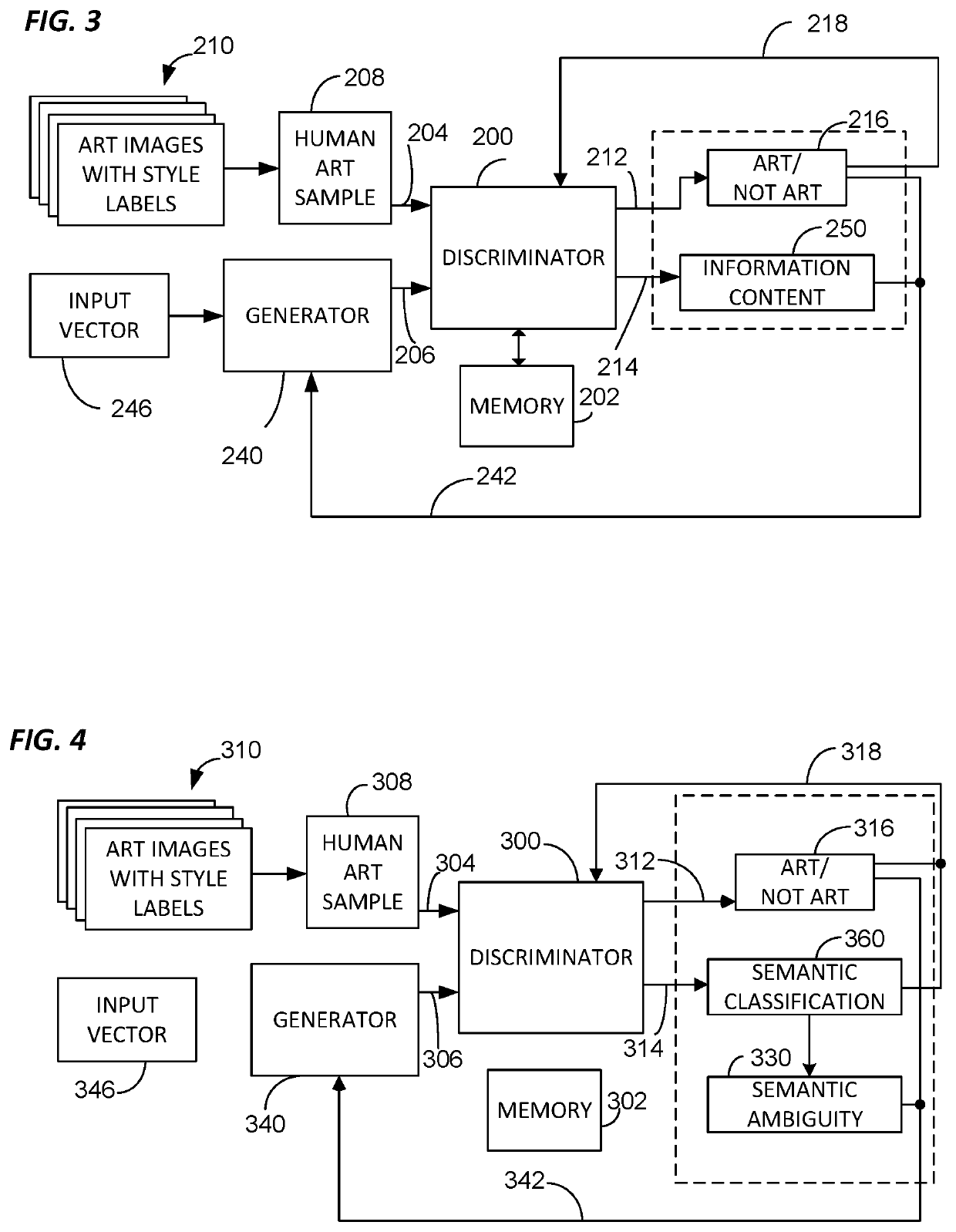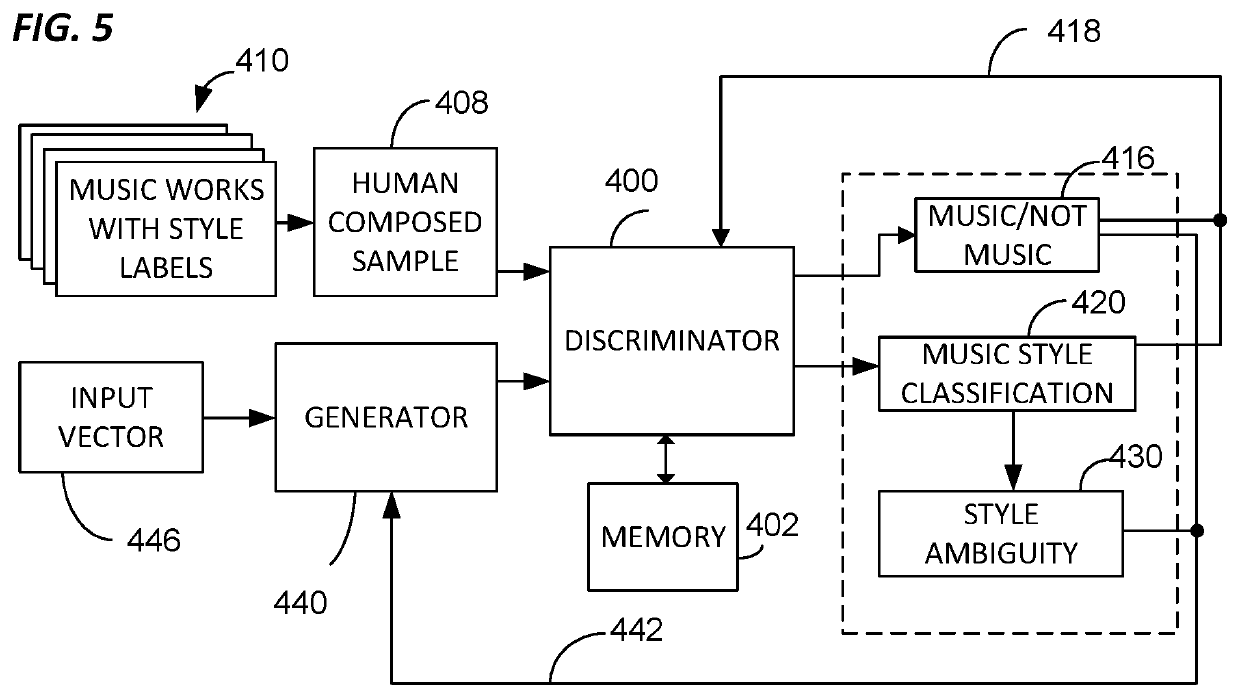Creative GAN generating art deviating from style norms
a technology of creative gans and art, applied in the field of system and method of generating art, can solve the problems of fundamental limitation of using gans in generating creative works, inability of known gans to generate anything creative, and limited ability of gans to generate creative products, etc., to maximize deviation and minimize deviation
- Summary
- Abstract
- Description
- Claims
- Application Information
AI Technical Summary
Benefits of technology
Problems solved by technology
Method used
Image
Examples
Embodiment Construction
[0031]The method disclosed herein is at least partially motivated from a theory suggested by Daniel. E. Berlyne (1924-1976), as set forth in “Arousal and reinforcement”, Nebraska symposium on motivation, University of Nebraska Press, 1967; and “Aesthetics and psychobiology”, Volume 336, JSTOR, 1971. Berlyne noted that the psychophysical concept of “arousal” has a great relevance for studying aesthetic phenomena. The “level of arousal” measures how alert or excited a human being is. The level of arousal varies from the lowest level, when a person is asleep or relaxed, to the highest level when s / he is violent, in a fury, or in a passionate situation. External stimulus patterns are one of the mechanisms of arousal, and are of particular importance and relevance to art.
[0032]The term “arousal potential” refers to the properties of stimulus patterns that lead to raising arousal. Besides other psychophysical and ecological properties of stimulus patterns, Berlyne emphasized that the most...
PUM
 Login to View More
Login to View More Abstract
Description
Claims
Application Information
 Login to View More
Login to View More - R&D
- Intellectual Property
- Life Sciences
- Materials
- Tech Scout
- Unparalleled Data Quality
- Higher Quality Content
- 60% Fewer Hallucinations
Browse by: Latest US Patents, China's latest patents, Technical Efficacy Thesaurus, Application Domain, Technology Topic, Popular Technical Reports.
© 2025 PatSnap. All rights reserved.Legal|Privacy policy|Modern Slavery Act Transparency Statement|Sitemap|About US| Contact US: help@patsnap.com



